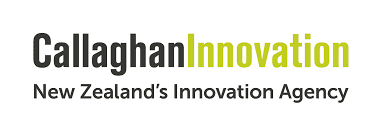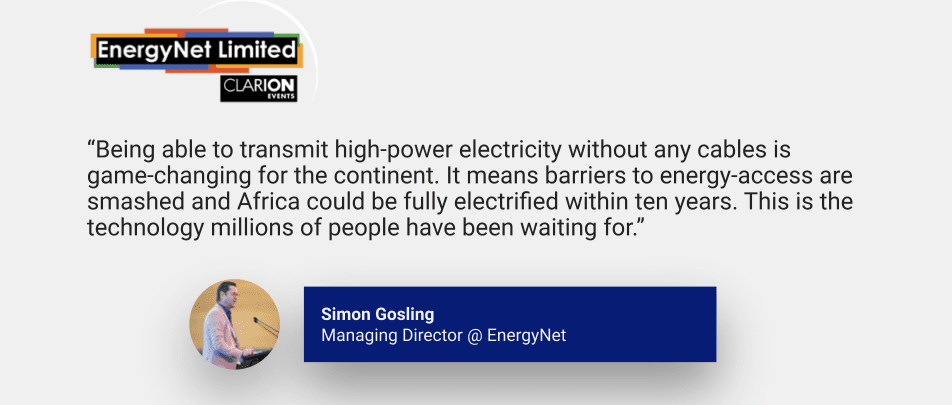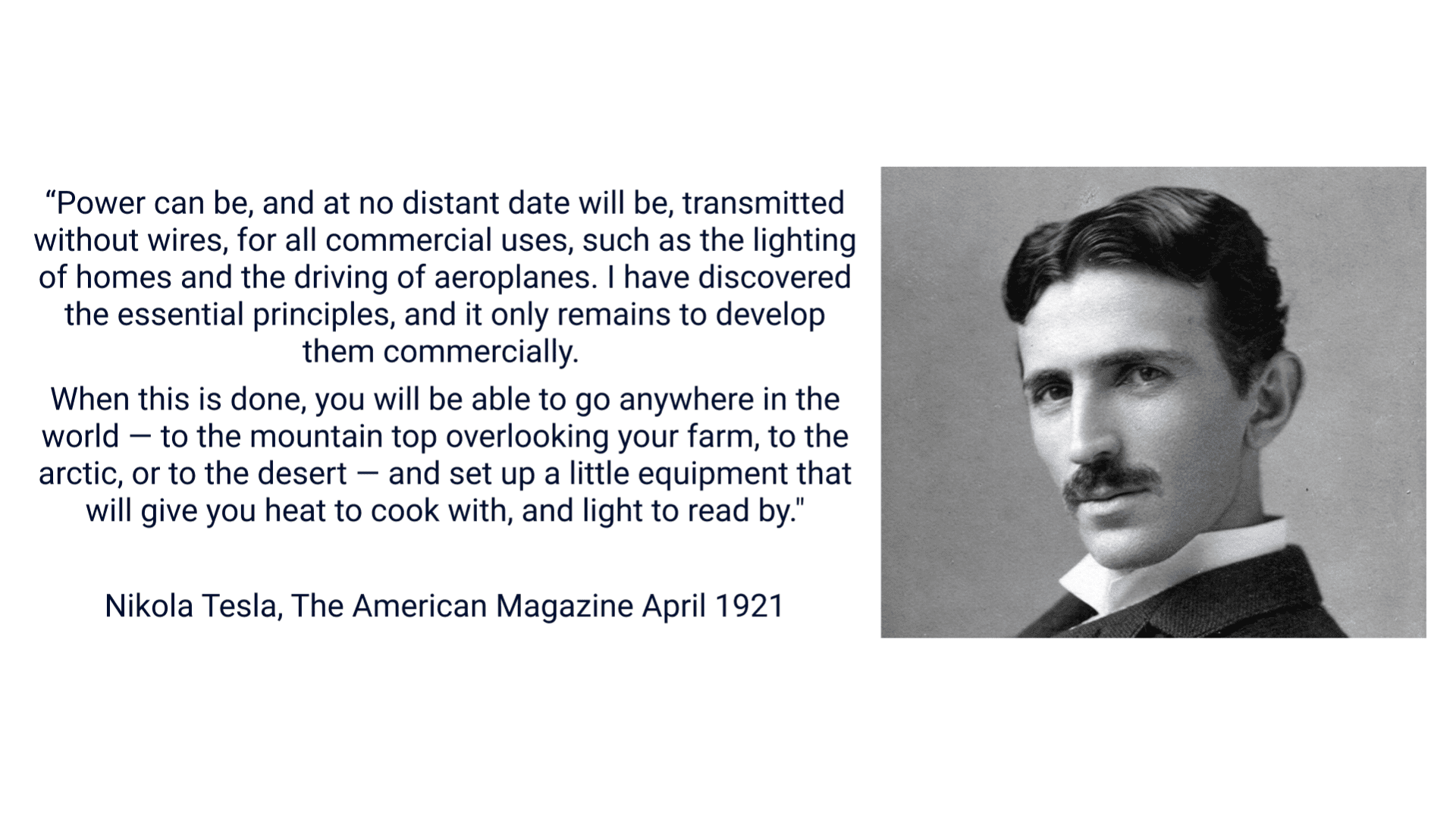Could power be beamed into hard to reach communities and might our homes become wire free? Reporter Stacy Knott visits ...
Problem
Power lines restrict humanity's ability to access and use sustainable energy
Power lines are expensive and, in some cases, not feasible to install and maintain across challenging terrain. This limits the ability to transfer electricity to and from hard to reach locations.
New and innovative ways of generating and distributing sustainable energy underpin the transition to a clean and inclusive energy industry. 13% of the world doesn’t have reliable access to electricity, and fossil fuels account for 84% of the world’s primary energy consumption.
Currently, electricity distribution companies spend billions of dollars each year maintaining expensive physical wire infrastructure in remote areas and transporting electricity across difficult terrains, such as forests, mountains and waterways. Many areas are inaccessible due to the high cost of laying and maintaining power lines, leaving remote areas without access to reliable power or dependent on diesel generators.
To improve the uptake of renewable energy and energy access and help accelerate decarbonization, a new and improved solution is needed for distributing electricity.
Solution
A long-range wireless power transfer system designed for commercial purposes
Emrod has developed technology for sending large amounts of power over long distances, without wires.
Our in-house research and development team have leveraged advancements in radar and metamaterials technology and developed our own patent-pending technology to make long-distance energy transmission safe and reliable for commercial purposes.
Emrod’s patent applications cover the core wireless transmission technology and the key elements required for extending transmission efficiency and range.
We are focused on providing a solution for energy distribution companies to improve their edge of network services, ongoing network delivery, outage response, backup installation services and access to renewable energy sources.
We currently have an indoor prototype system (shown below) that is being optimised ahead of a planned field trial later in 2021.

Product
A better way to transport energy to and from challenging locations
Providing an alternative to power lines and opening up new opportunities to use sustainable power

Emrod’s infrastructure works by converting electricity into electromagnetic energy, which is shaped into a collimated beam and sent directly through the air from a transmitting antenna to a receiving antenna, without requiring wires. At the receiving antenna, the electromagnetic energy is converted back into electricity for use by consumers.

One of Emrod’s proprietary features is the ability to extend the range or reduce the antenna size, through the use of passive relays. These relays refocus the electromagnetic beam and allow energy to be transmitted over long distances.
Emrod’s system includes a laser-based safety “curtain” which encloses the transmitting beam. Any interruption by an object passing through the beam will cause the system to block power transmission over the entire antenna or a section of the antenna where the obstruction is detected. This can be achieved while maintaining supply continuity.
We expect our system to reach 60% end-to-end efficiency with our current technology and have a development roadmap for further improving system efficiency, as well as transmission distance and power levels. We will add in additional functionality such as beam steering to open up access to other markets such as powering or charging vehicles, ships and aircraft.
Applications:
The images shown below are for illustrative purposes only. The system's actual configuration will vary, and generally speaking the larger the amount of power to be sent and the longer the distance to cover, the larger the antennas will need to be.

Traction
Leaders in long-range wireless power transmission
Since announcing our proof of concept and first partnership, we have received an influx of interest from around the world including from local and multinational utilities, government agencies, renewable developers, cell tower providers, mining companies, EPC companies, tech integrators and direct consumers.
First partnership with customer in 2019
First infield pilot project confirmed for 2021
MOU’s signed with three selected organisations with several more underway
Worldwide Recognition:
Emrod has received extensive coverage in leading industry publications, such as The Economist, New Atlas and Popular Mechanics. We have spoken at leading conferences within the power transmission & innovation industry, including IEEE and EnergyNet.
First partnership & prototype system implemented
Emrod completed a lab-based proof-of-concept system in 2019 and subsequently entered into a partnership agreement with Powerco, New Zealand’s second-largest electricity distribution company. Powerco helped fund a prototype system, which is assembled and operational at Emrod's indoor test facility.

Emrod is also partnered with the New Zealand government innovation agency, Callaghan Innovation, who have provided grant funding to support Emrod.

Dr. Ray Simpkin, Lifetime Achievement Award winner from the 2020 Science NZ Awards
Dr Ray Simpkin, Emrod’s Chief Science Officer, previously Distinguished Scientist at Callaghan Innovation, received a Lifetime Achievement Award at the 2020 Science New Zealand Awards.

Customers
Empowering communities by offering access to sustainable energy
We work with utilities and renewable generation developers, lines companies, and engineering, procurement and construction companies whose customers are in the business of electricity transmission and distribution or need smarter ways of getting electricity to and around their developments. Our first commercial partner is Powerco, the second-largest electricity distributor in New Zealand.

Our global vision is to empower communities by offering those most in need access to sustainable energy. By significantly reducing infrastructure costs, Emrod’s technology can support areas in Africa, the Pacific Islands and other remote communities to access sustainable energy. Emrod’s technology can also be used to improve network resilience by reducing outages and addressing fire hazards caused by power line system failures. In these contexts, our customers will also include multilateral donor organizations and industrial and bigger commercial users of power too.

Business model
Staged go-to-market strategy
In 2020, Emrod invoiced a total of $150k (based on recent NZD to USD conversion rates). For 2021, we project revenue of $3.3M driven by the delivery of key pilot projects.

Emrod’s initial revenue will come from direct equipment sales and maintenance contracts to energy distribution companies and other organizations working on sustainable energy projects.
Scaling up through channel partners
Once we have demonstrated a sufficient number of in-field projects and commercial scalability, we will begin selling through third-party distribution channels. This includes engineering firms that are selling to lines companies globally and integrators of communication/power systems.
Licensing into other verticals to accelerate revenue growth
There are opportunities to license our technology to rapidly grow in additional verticals. We have been approached by manufacturers and integrators in marine, aviation, space, mining and other industries outside our initial market focus.
Market
First-in-market long-range wireless power transfer technology for commercial purposes, with many applications
Our initial target market is a global electricity transmission and distribution infrastructure. Our unique technology enables us to sell into a number of fast-emerging markets, supporting the electrification and de-carbonisation of marine, aviation and mining industries.

Emrod’s technology is well-positioned to support anticipated changes in the energy market, including the growing demand for renewable and sustainable energy sources in the transportation industry, and the shift towards decentralized power solutions, all of which will benefit from efficient, long-range power transmission.
Competition
Carving out a new market in wireless power transfer
Existing wireless power transmission technologies are primarily for transmitting smaller amounts of power over smaller distances for the purpose of charging devices. Emrod’s system is designed to transport larger amounts of power over long distances.

The other organizations working on wireless technology with similar capabilities, in terms of power levels and distances, are government-funded organisations, including NASA, DARPA and the Japanese Space Agency. This technology has been primarily for military and space-related applications. It is not available for commercial use.
Compared to existing transmission and distribution infrastructure, Emrod's technology is more suitable in circumstances where it is challenging, dangerous or not suitable (e.g. powering mobile sites or equipment) to lay and maintain power line infrastructure.

Vision and strategy
A world where energy transfer is not constrained by wires
Long-range wireless transmission is the next stage in the evolution of the energy industry. Our mission is to make it happen and use our innovative and transformative technology to have the most positive impact on the largest number of people. With immediate, highly valuable applications and proven market demand, our technology has the ability to open up a world of possibilities and solve the world's most important sustainable energy and energy transportation challenges.
With your investment we will continue to develop our technology, introducing newer and more efficient versions of our product with greater distance and power capacities.

Funding
Raising to support field trials and commercial growth
We’ve received $2.0m of funding to date (based on recent NZD to USD conversion rates). This has been from Emrod’s founder, Greg Kushnir, and non-dilutive funding from Callaghan Innovation (New Zealand’s Innovation Agency) and Powerco.
We are currently raising to support the next stage of Emrod's growth, including:
- Ramping up R&D and production capability
- Deploying the planned field trials
- Hiring new staff (engineers, sales and account managers)
Your investment will help to accelerate the development of wireless power and enable Emrod to serve communities and customers eager to connect to cleaner and more sustainable power.

Founders
Greg Kushnir, Founder & CEO

Greg is an experienced founder who has been inventing and commercialising tech for over 15 years. He holds a BSc in Computer Science from The Academic College of Tel-Aviv and an MBA from NYU Polytechnic University. He got partway through completing a PhD in philosophy of mathematics from The University of Waikato before the commercial world consumed him.
Greg worked as VP of Business Development for NPI and Product Manager for 888Holdings before starting and selling several software companies of his own. His success as an entrepreneur paved the way for him to focus more resources on solving some of the world's most significant problems - Energy Access and Climate Change.
Greg realised that the challenges with accessing sustainable energy were not with generating energy or storing it in many cases. The main problem that no one seemed to be addressing was moving clean energy from where it is generated to where it is needed in a cost-effective, eco-friendly way. After developing a proof of concept system to validate that long-range wireless power transfer was indeed possible, Greg founded Emrod.
Team
With the support of Callaghan Innovation, the New Zealand Governments Innovation Agency, Greg recruited Ray Simpkin, a Distinguished Scientist in Electromagnetics, Microwave Engineering and Materials Science. Greg also recruited Mark Tomkins, an Electrical Engineer and Experienced Project Manager, to support the early development of Emrod. The team quickly grew to nine, with experience spanning microwave engineering, electromagnetics, energy project management and technology commercialization.




 Oops! We couldn’t find any results...
Oops! We couldn’t find any results...




















